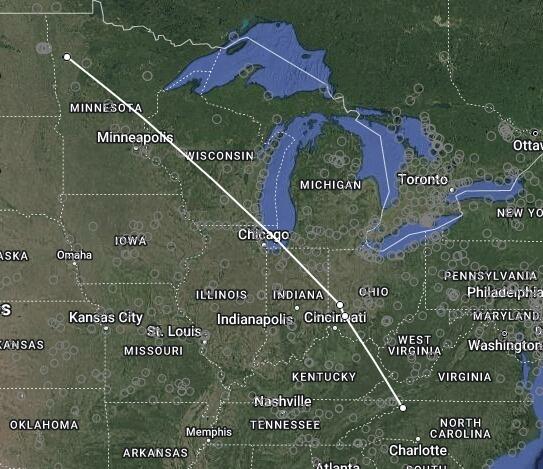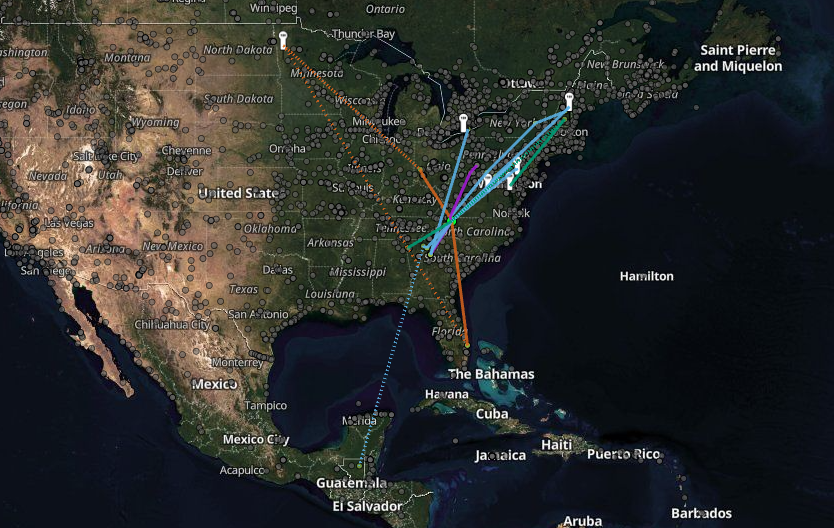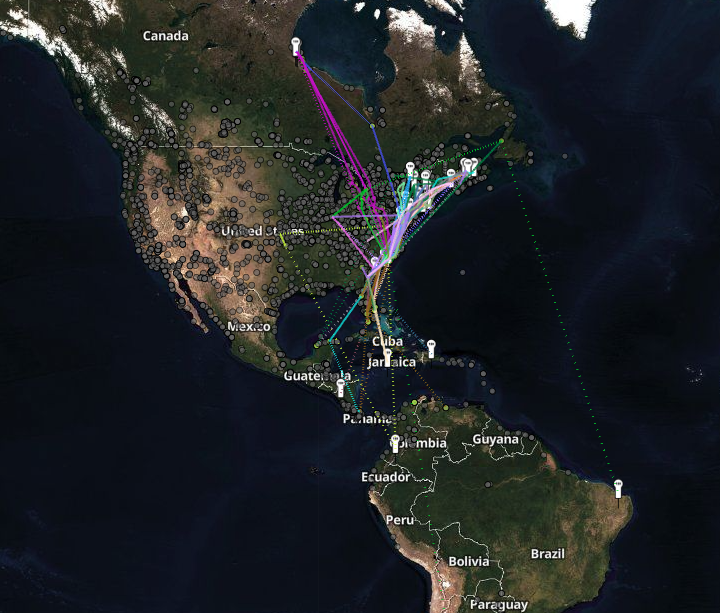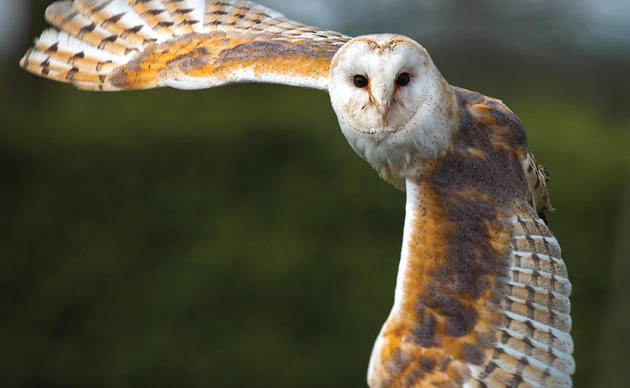New wildlife tracking towers placed across the state by Audubon staff and chapters are already picking up radio-tagged birds, helping to connect the dots of bird migration across the hemisphere and inform conservation and research efforts.
We’ve detected a Piping Plover from Canada, a Bobolink from Minnesota, Short-billed Dowitchers from New Jersey, and many more. These detections are giving researchers a fuller picture of the lifecycle of birds and, eventually, will help us better understand what resources they need throughout their life.
Until very recently, North Carolina had very few of these towers, which are called Motus towers and are part of a global wildlife tracking research effort. Audubon chapters and partners are stepping up to fill in the gaps.
When researchers tag and band a bird, it becomes an identifiable individual, kind of like a driver's license for people. Each tag emits a unique signal, allowing antennas to detect birds in flight within 9-12 miles of a tower.
Motus towers record the time a bird was detected as well as the signal strength—the stronger the signal, the closer the bird. All of this data is made public for everyone to see and study.
Read on for a full rundown of Audubon’s Motus towers in North Carolina.
New towers to fill in the gaps
This spring Mecklenburg Audubon Society installed a tower on UNC Charlotte’s campus. The tower fills an important gap in the middle of the state. So far, three Wood Thrush have been detected. Over the summer, students from the UNC Charlotte Audubon Campus Chapter worked on installing a monitor in the lobby of the Earth Sciences Building where the tower sits, so students can view migration information on their way to class.
In 2024, Blue Ridge Audubon installed its first Motus tower in coordination with the NC Wildlife Resources Commission. The King's Bridge Motus Station fills in sizable coverage gaps that existed along the French Broad Valley in western North Carolina, a known migration corridor. We anticipate this station will also provide valuable coverage for shorebird studies that are being planned in the next few years.
“Our partnership with North Carolina Wildlife Resources Commission, which installed and maintains the King’s Bridge Motus station has been very fruitful,” said Blue Ridge Audubon Chapter President John Koon. “It’s recent relocation from Mud Creek has resulted in numerous detections this fall including Wood Thrush, Swainson’s Thrush, Swainson’s Warbler and an Eastern Whip-poor-will.”

Also in 2024, High Country Audubon installed their first tower on the Appalachian State University Sustainability Farm in Ashe County. Their first detection was a Bobolink that was initially tagged at Glacial Ridge National Wildlife Refuge in northern Minnesota and passed by the High Country Motus tower in September of last year.

This map shows its migration path between northern Minnesota and North Carolina. Out of the 19 Bobolinks tagged by the research team at Glacial Ridge, this is the only one so far that they have tracked traveling further than 100 miles.
The tower has also detected Wood Thrush, Tennessee Warbler, and even a Monarch butterfly that was tagged in Maryland in September. The Monarch then flew to New Hampshire, and then turned around and arrived at the farm later in the month—a trip of more than 700 miles—with an average flight speed of just over 3 mph. It stayed at the farm for five days and then continued on its journey.

Other North Carolina Audubon chapters are in the process of securing funding for additional towers across the state.
Pine Island Audubon Sanctuary
Installed just this year, the station at our sanctuary on the Outer Banks has already picked up long-distance migrants including a male Piping Plover that was tagged in Canada and a Short-billed Dowitcher tagged in New Jersey with support from New Jersey Audubon. More recently we’ve picked up three Bicknell’s Thrushes, which migrate south to the West Indies, especially to the island of Hispaniola. These detections show just how important Pine Island is as a stopover spot for migrating birds.
The Piping Plover hung out in the Outer Banks for five days before continuing south in August, while the Short-billed Dowitcher hung around for 27 days. Their tracks end a bit farther south for now.
This could be because they’re not flying close enough to Motus towers. That’s why putting up more towers across the landscape is so important. The more towers we have, the more birds we can detect.

Lea Island Audubon Sanctuary
In 2022, Cape Fear Audubon, Audubon North Carolina, and UNC Wilmington partnered to install a Motus tower at Lea Island, an undeveloped barrier island just north of Wilmington. The tower detected many birds passing through last fall including Savannah Sparrow, Yellow-rumped Warbler, Gray Catbird, American Kestrel, Bicknell’s Thrush, and Rusty Blackbird. So far this spring the tower has detected a Short-billed Dowitcher.
The dowitcher was tagged by the same research team as the bird detected by our Pine Island Motus. It spent four days near the island which shows just how important Audubon’s sanctuaries are as a resting spot for these shorebirds.

Audubon is proud to be part of this growing technological network to track birds and other wildlife. These towers allow birds to show us what resources they need throughout their annual life cycles. It’s our mission to use this data to better conserve them into the future.








